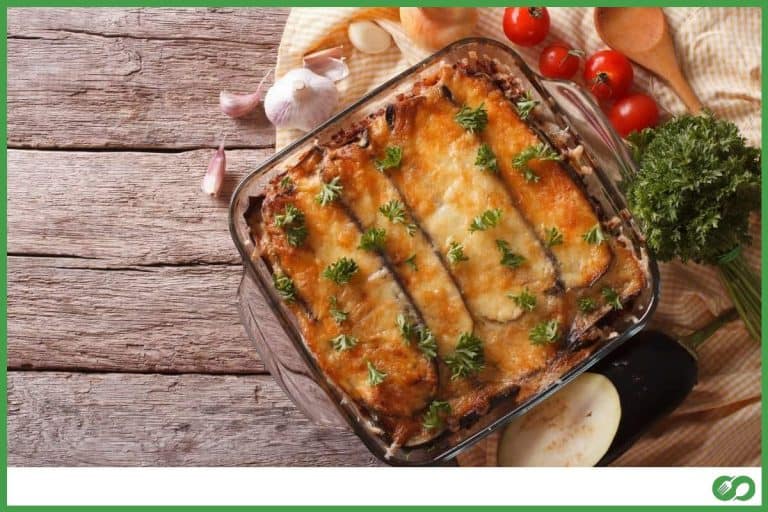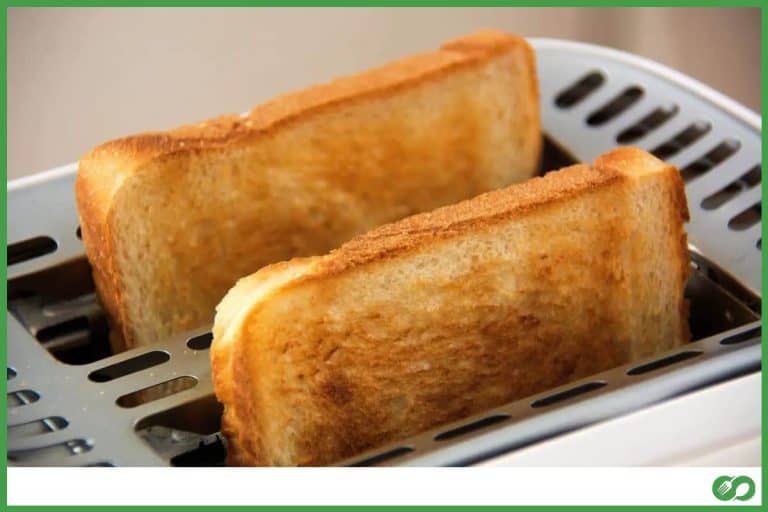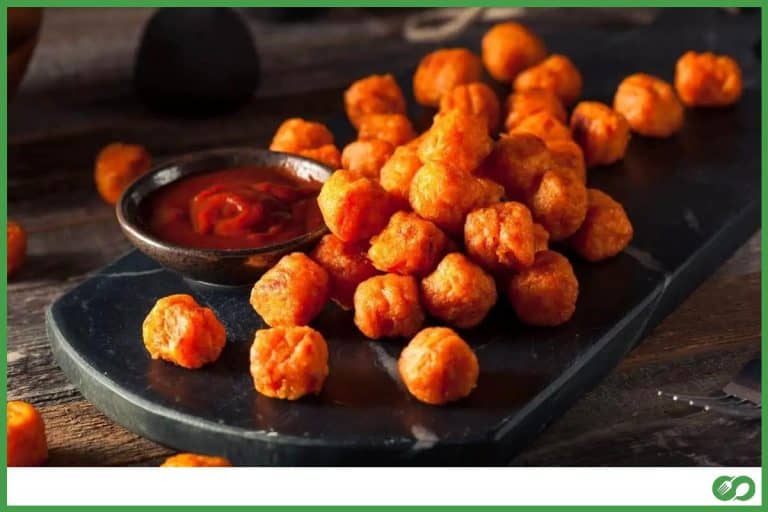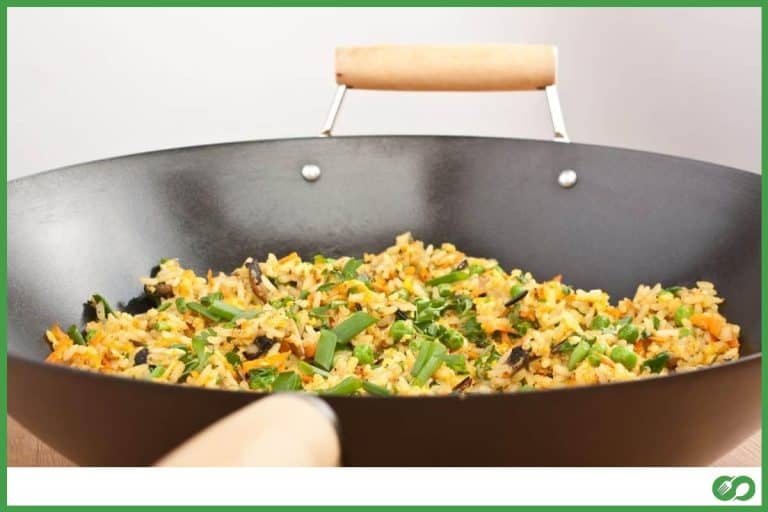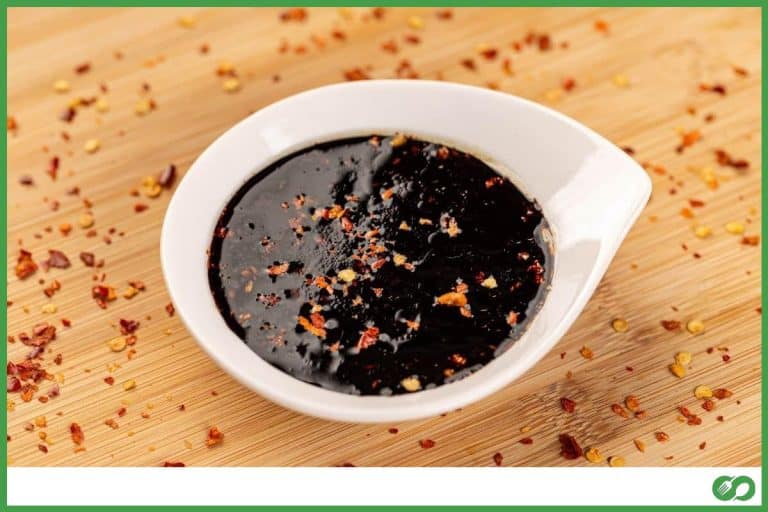Can You Bake Cinnamon Rolls on Aluminum Foil?
This post may contain affiliate links which means that, if you choose to make a purchase, I may earn a small commission at no extra cost to you.
When you have a craving for fresh-baked cinnamon rolls out of your oven, the last thing you want to do is cook them improperly. So, here’s the low-down on cooking them on aluminum foil. Whether canned rolls or from scratch, the answer is yes, you can use foil as the baking surface.
Cinnamon rolls bake properly on a foil-lined oven-safe dish as long as the foil is greased with butter, cooking spray, or shortening. Since the rolls easily stick to their baking surface, even foil, heavy-duty foil is recommended. For a uniform bake in a sided-dish, foil and grease up the sides too.
Foil for canned cinnamon rolls
If using canned cinnamon rolls, like Pillsbury, then use any oven-safe metal cake pan, preferably round. A sided casserole dish or baking sheet can be substituted if necessary.
After you line the pan or dish with foil, spray it with cooking oil spray or butter spray, so evenly coated. If you don’t have spray, then grease it by hand with butter or shortening like Crisco.
Placing the rolls on dry foil will bake the rolls, but they will also stick to the foil, making it difficult if not impossible to remove them from without taking some foil with the rolls or destroying their shape.
You can also use a foil baking pan…the single-use, disposable kind available at almost any grocery store. Like the foil, it still must be greased. Even with greased foil, it’s possible for some of the stickier types of rolls (caramel, fresh orange, etc.) to stick to the foil, so use heavy-duty foil instead of regular foil if you can.
For your own from-scratch cinnamon rolls
If using your own from-scratch rolls, the same suggestions apply. If using a sided baking dish, line the foil up the sides, too, and grease those sections as well as the bottom. This will give the batch of rolls a more uniform bake to avoid some lesser cooked ones among the fully cooked rolls.
Foil as cover to up the softness
Foil can also be used to create fluffier, moister tops to the buns by tenting the foil over the cinnamon rolls and baking like that rather than uncovered. For fluffy-topped buns with a touch of crispiness on the very top surface, let them bake covered with foil for the first 75% of the baking time, then uncover them for the remaining 25% of the time.
Other Tips for Baking Cinnamon Rolls ; Whether to Use Foil
The texture factor
Most of us love the chewy, soft texture of a warm cinnamon roll, so how can you be sure your homemade buns live up to that mouth-watering expectation? It’s easy!
You can ask for the recipe from those bakers whose rolls you find the moistest. It’s a hit or miss but it doesn’t hurt to try.
Try looking for the recipes online with the most reviews spouting high-praise for a pillowy soft texture. Tried and true recipes are usually pretty reliable.
But don’t look on sites from actual cinnamon roll companies because those are most likely pushing a certain ingredient or baking product, whereas, sites like Allrecipes or Yummly are made up of home cooks and bakers who have nothing to gain but a warm heart when another person tries their recipe.
General tip: For a lighter, fluffier bun, that you can fill with cinnamon spread and cover in a sweet drizzly frosting for maximum sweet gooiness, go for recipes that are more similar to making white bread than a typical cinnamon roll. That dough will bake up with some airiness to let the filling and butter seep into it… can’t you just taste it! Yummmm.
Don’t overbake! Cinnamon buns can quickly transition from moist and soft to dry and hard in the oven, so be sure to watch your rolls. Always bake for the minimum time and check the rolls before baking any longer.
To check them, lightly press down in the middle of one roll with your finger. If it’s mushy, it’s not done. If it’s soft and bounces back, it’s done! Once it’s hard or doesn’t bounce back, it’s over-baked and likely dried out inside.
To foil or not to foil… FOIL! Feel free to bake on an aluminum foil surface and definitely tent foil over the batch of rolls for baking them. Again, remove the foil for the last 25% of the baking if you want some sort of crispy top, but, worry not, the inside will still be soft and moist.
The sticky factor
For the stickiest of buns, you’ll want to add ingredients that are not in a traditional cinnamon roll recipe. Here are some great examples…
- Maple cinnamon rolls: Be sure the recipe calls for maple syrup, as mere maple extract won’t yield that sticky factor.
- Orange cinnamon rolls: The recipe must use fresh-squeezed orange juice which will become sticky as it bakes. Be sure not to use too much juice because it can change the texture of the dough, weighing it down.
- Caramel cinnamon rolls: A touch of caramel in both the cinnamon spread and in the topping will make the recipe a sticky winner!
To foil or not to foil: Foil on bottom only. Covering the rolls while baking with the above sticky ingredients will prevent their cooking to the perfect level of stickiness, leaving you with runny, watery syrup, orange juice, or caramel.
The burning factor
Yikes! Nobody likes a burnt cinnamon bun. The bitterness, the dryness, the crunch of the burnt outer layer..no thank you!
Among so many recipes for baking cinnamon rolls there are many different instructions on oven temperature and cook times, so here are some tips for baking without burning.
1. Follow the temperature and time instructions on a specific recipe. Usually, if the recipe is tried and true enough (many good comments and reviews), the instructions are probably spot on.
2. If you find a recipe with a huge range for the time (maybe as much as 5 minutes or more), always go with the minimum number of minutes and check before baking any longer.
3. See if the recipe says what kind of oven to use for the particular recipe. If you have a conventional oven but it’s actually meant for convection, then the buns are in trouble! Since a convection oven cooks much faster, you will likely burn your rolls if you are not careful.
4. If you’re using a dutch oven (cast iron pan with cover), be sure your recipe provides cooking for that type of baking, as it is quite different than the common baking sheet and conventional oven type. But if it doesn’t say, this course will work well for a dutch oven in either a conventional oven or in hot coals: “350 F (“176.7 C) for 23-27 minutes.
To foil or not to foil dutch ovens: Foil! Dutch ovens are extremely difficult to clean unless you have one treated with non-stick enamel. That layer of foil (greased, of course) can mean the difference between a sore wrist and a strong one for enjoying a huge glass of milk with your fresh cinnamon rolls. Since dutch ovens cook with a cover, they don’t burn easily.
Baking surface affects time and temperature
Adjustments based on the material of the baking dish/pan. If a recipe calls for a metal pan, but you only have glass, definitely adjust the time and or temperature for baking because metal is a better conductor of heat than glass; it will take longer and may need an increased temperature to get a good even bake.
Glass makes food take longer to cook due to its slowness to heat as quickly as metal. Metal easily conducts heat. Once glass it’s heated, however, it retains heat better than glass, so it can then over-bake the bottoms of the buns. Lining a glass dish with foil will reduce the chances of a burn late in the baking time and cook more like a metal pan.
Here’s a conversion table to help you out. This is NOT a guide for ALL recipes. It’s merely a conversion chart based on a given temperature.
| METAL PAN | GLASS PAN | GLASS PAN with FOIL lining | |
| Temperature | “375 F (“190 C) | “400 F (“204.4 C), then “375 F (“190 C). | “400 F (“204.4C), then “375 F (“190 C). |
| Time | 29-31 minutes | 10 mins on “400 F (“204.4 C), then 18-20 mins on “375 F (“190 C) | 5 mins on “400 F (“204.4 C), then 24-26 mins on “375 F (“190 C) |
| Tip | Since glass does not cool down as fast as metal, be sure to cool on an elevated cooling rack rather than a hot pad. | The hot glass will slow cooling, so shape the foil like a basket when you line the pan. Then, after two minutes of cooling, lift out all of the rolls at once with the foil. |
FOOD TRICK: For stickier cinnamon rolls that don’t have unconventional ingredients, simply smear some of the cinnamon filling evenly on the foil in your baking pan/sheet before placing the rolls on it.

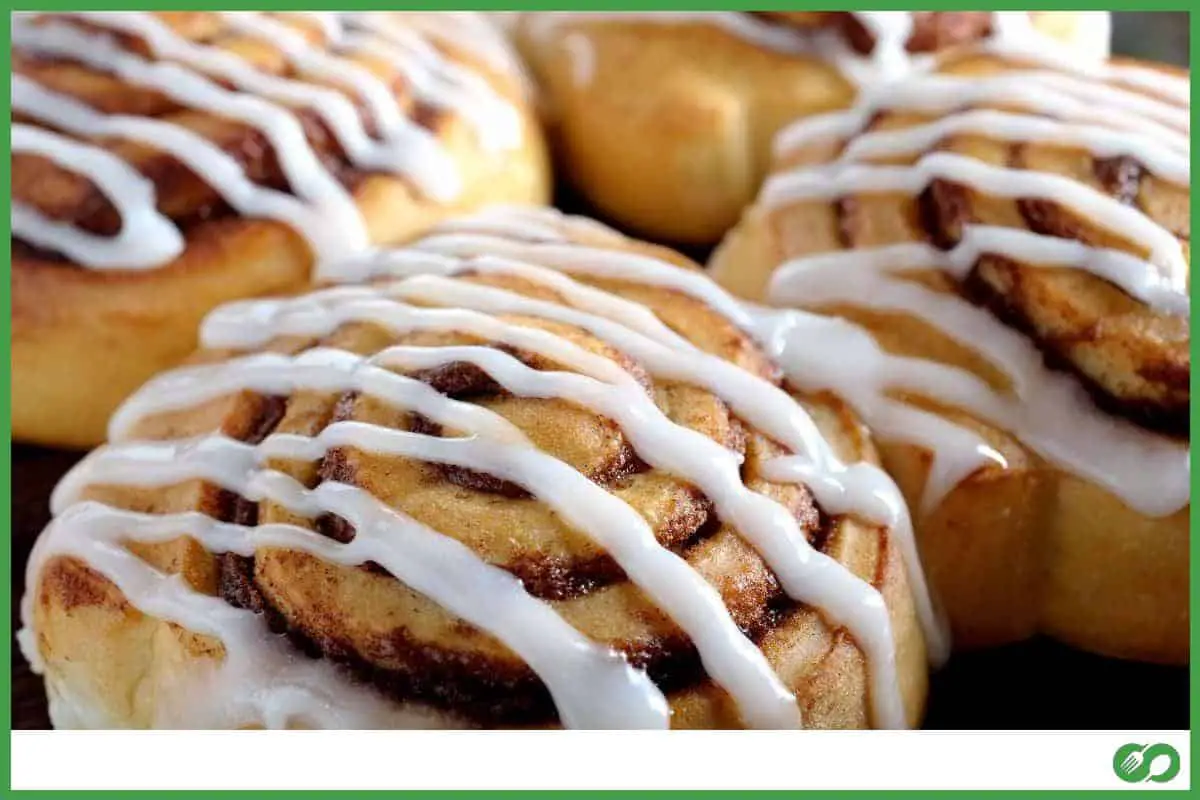
![What Do Sausages Taste Like? [28 Different Kinds]](https://topfoodinfo.com/wp-content/uploads/2023/06/What-Do-Sausages-Taste-Like_processed-768x512.jpg)
